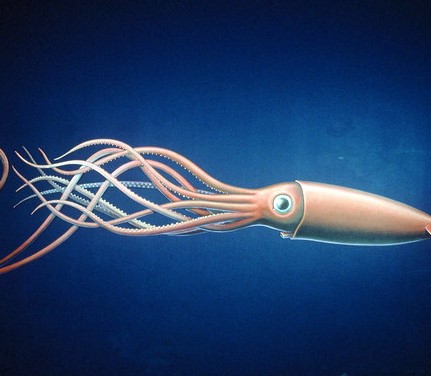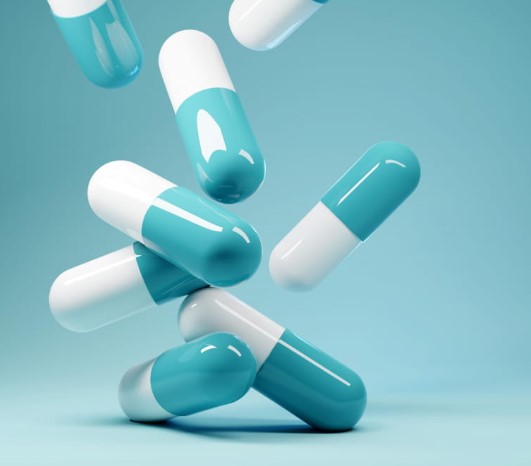Antibiotics in Squid: Problems and Solutions

Photo is illustrative in nature. From open sources.
Squid is one of the most popular seafood in the world. They are rich in protein, easy to digest and low in fat. However, like any other product,squid can be contaminated with various harmful substances, includingantibiotics .
Antibiotics are used to fight bacterial infections in animals, including squid. However, if antibiotics are used incorrectly, they can causeharm to human health.
One of the main risks is that the use of antibiotics can lead to the development of antibiotic resistance. This means that bacteria become resistant to antibiotics and cannot be killed by them. This can result in people being unable to treat bacterialinfections that were previously easily treatable.
In addition, the use of antibiotics can cause them to enter marine ecosystems and harm marine life. They can also end up in the foods we eat.
To prevent the risk of negative consequences of using antibiotics in squid, quality control measures must be taken. This includes testing for the presence of antibiotics in squid and determining their concentration. It is also necessary to control the use of antibiotics in aquaculture where squid are raised.
There are alternative treatments for bacterial infections in animals that do not require the use of antibiotics. One such method is the use of probiotics, live microorganisms that can help boost an animal's immune system and prevent bacterial infections.
In general, the use of antibiotics in squid and other foods can be hazardous to human health and the environment. Quality control measures should be taken and alternative treatments for bacterial infections should be used to ensure food safety and preservehealth of people and nature.
Read together with it:
- Reward for ForgivenessBy 2000, my parents left me without a roof over my head, saying: “It’s okay, you’ll earn money yourself.” Where can a doctor in our country earn an apartment?I wandered around strange corners for 10 years, rented rooms with hostesses, and earned money. I was able to save a little and was looking for...
- I can't quit because of quarantineI have been working in food production since July last year. At first everything was fine, until after another move inside the office,the general's wife did not sit with him in the office. That's it, it became impossible to work. They scream, scream constantly. They yell and swear. The CEO's wife an...
- Family life was not what I imagined it to beI am 31 years old, yeshusband anda child who is only 6 months old, with her husband inThey got married precisely because of pregnancy, but they really wanted a child and are happy that they became parents.But that's justRelations between each other have become very bad lately, there are constant qua...
- The guy hits me and calls me namesI'm dating a young man. It's already the third year. I feel bad, I don't know why. I don’t have anyone to whom I could talk and understand. Parents are not allowed under any circumstances, there are no friends. They were, but my boyfriend discouraged me from them.I don’t have the strength, and I don...
- My ruined lifeI hate minelife , your environment, your parents. Nobody has ever loved me, since I was born.I am 29 years old, I live in a small village (10 thousand inhabitants). Mother gave birth to me becausemy father wanted it, but since I didn’t see my mother’s love, I was closed and unsociable, my father was...
- My emotional dependence on a married manMy story is banal and as old as the world. I can tell my friends, but they have enough problems of their own. You just need to talk it out.I'm quite old now. There were also marriages, but they didn’t work out, there were no children. Three years ago, at an entertainment event, I met a man.At first ...
- Gratitude for lifeIn fact, one of the biggest discoveries in life for me was the feeling of gratitude for this very life.For more than 30 years I lived with constant complaints and resentment towards everyone - my parents, friends, classmates, fellow students, work colleagues, fate... The list goes on and on. And bei...
- I have no conscienceI’m so tired of everything that I want to scream, stomp my feet and fight in hysterics, but I have to keep my face, so I’m writing here to talk it out.How does all this family debt stand in the way! Well, I don’t want to inspect my mother-in-law, I don’t want to, that’s all! No, she didn't do anythi...
- Women's beauty is working on yourself plus quality cosmeticsSome of my female peers surprise me. It seems that grown women, who are already over 30, believe in fairy tales and miracles. And they don’t want to understand that nothing happens just like that, without effort, be it a promotion or the absence of folds at the waist.I am especially annoyed by the r...

